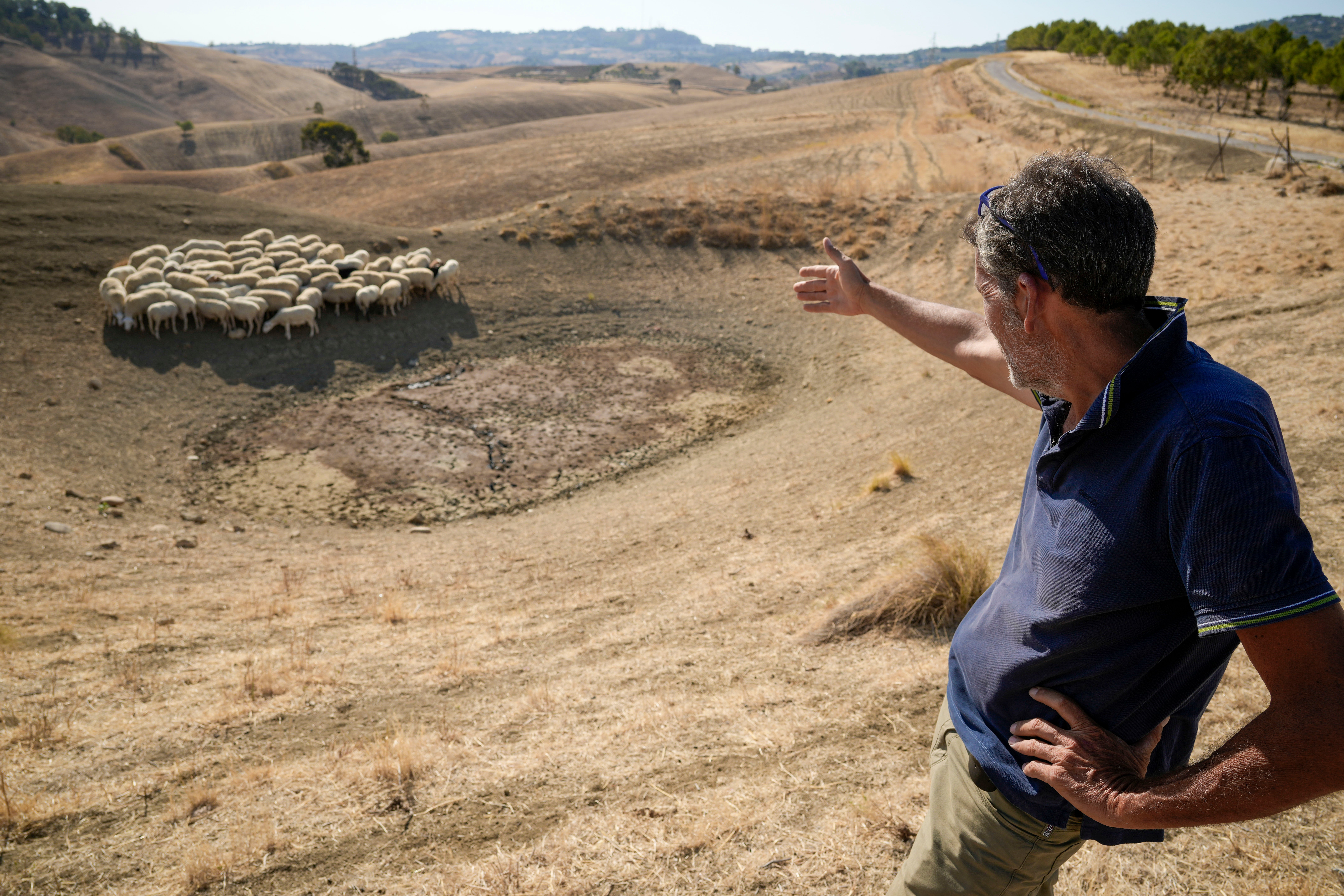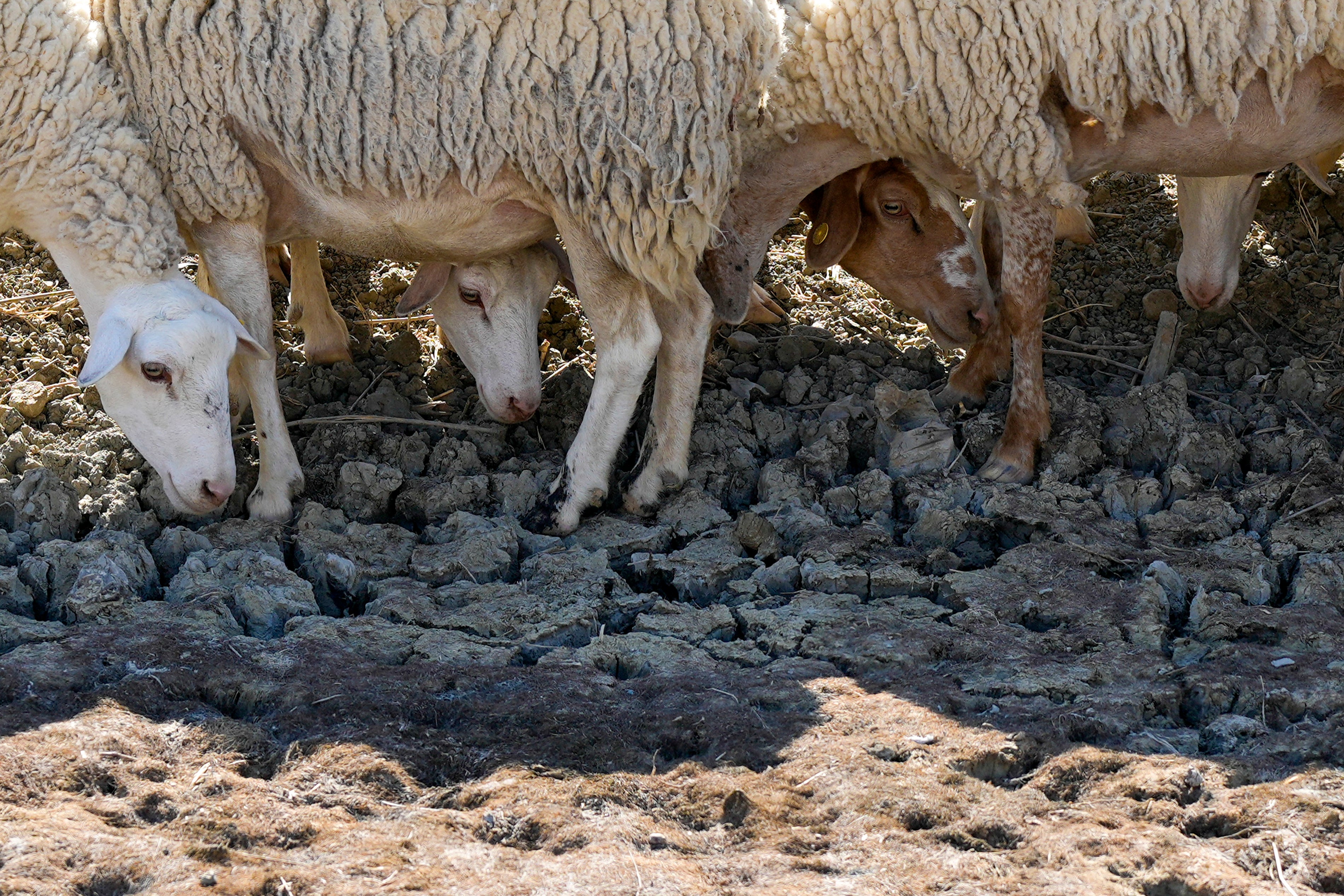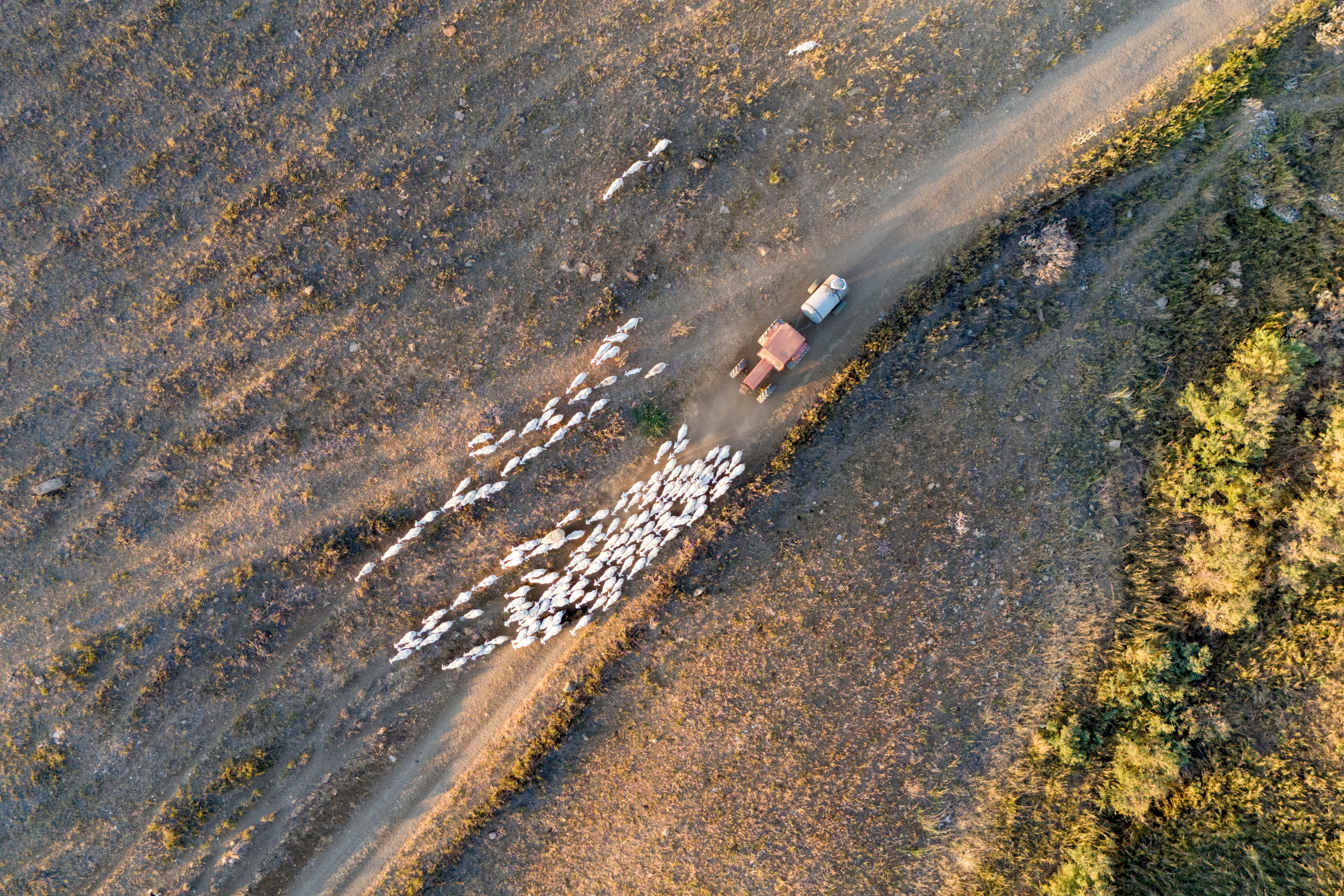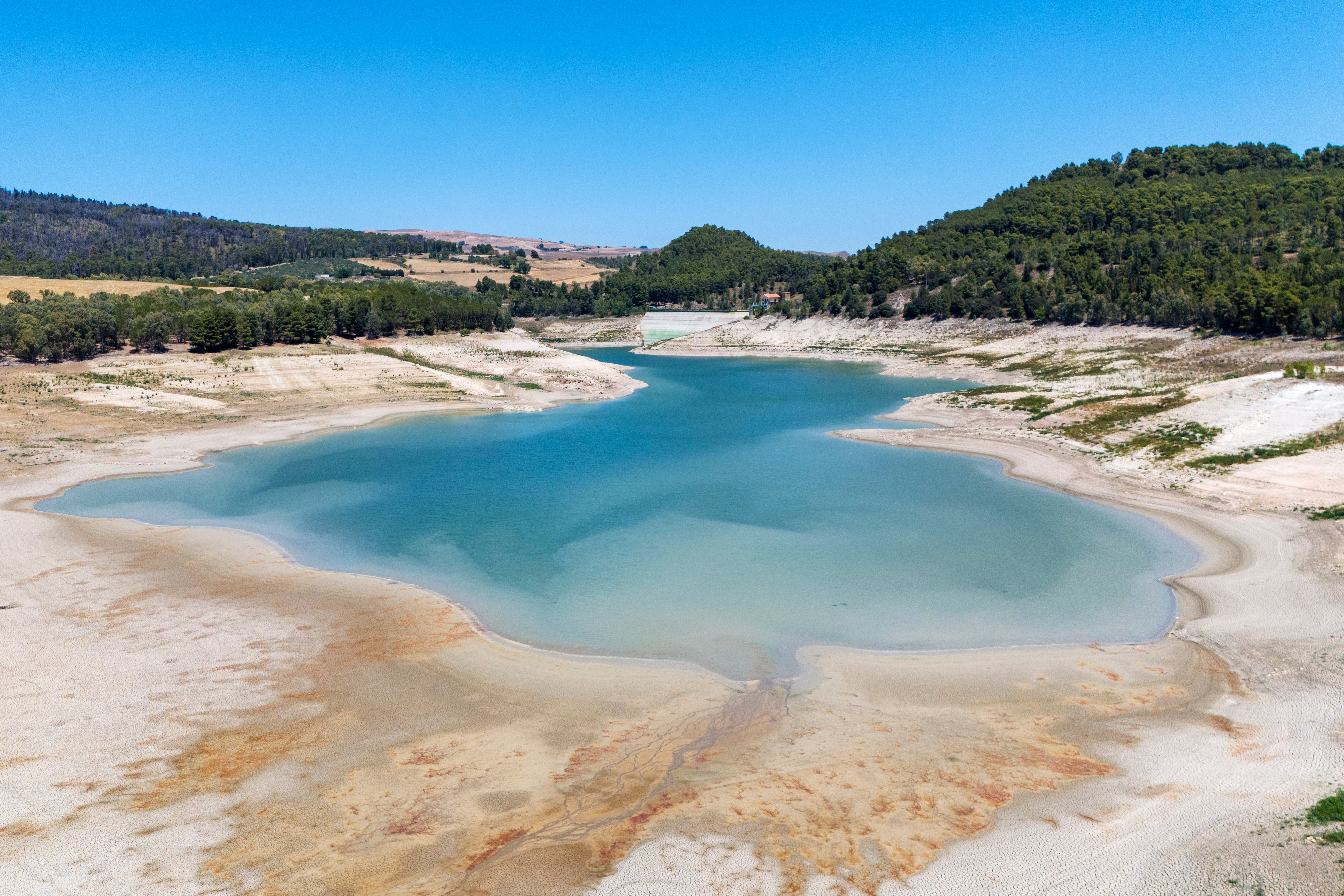The Italian island in a state of emergency as drought ravages country’s crops
The region is one of Italy’s breadbaskets, producing 20% of the country’s durum wheat that goes into pasta

Your support helps us to tell the story
This election is still a dead heat, according to most polls. In a fight with such wafer-thin margins, we need reporters on the ground talking to the people Trump and Harris are courting. Your support allows us to keep sending journalists to the story.
The Independent is trusted by 27 million Americans from across the entire political spectrum every month. Unlike many other quality news outlets, we choose not to lock you out of our reporting and analysis with paywalls. But quality journalism must still be paid for.
Help us keep bring these critical stories to light. Your support makes all the difference.
On a July afternoon, a municipal water truck rolls up in a cloud of dust on Liborio Mangiapane's farm in southern Sicily. Some of the precious liquid gets transferred to a smaller cistern on a tractor that Mangiapane's son will use to fill troughs for 250 cattle and sheep, but by tomorrow, all 10,000 liters from the truck will be gone.
Crippling drought from a nearly rainless year, coupled with record-high temperatures, has burned out much of the region's hay and is pushing farmers to the limit. For Mangiapane, every day is a struggle to find water, with frantic phone calls, long trips to faraway wells and long waits for municipal tankers.
If rain doesn't come by the end of August, he's afraid he'll have to sell off his livestock.
“We are in a moment of extreme heat and therefore animals need a lot of water," Mangiapane said. "It’s a constant anxiety to keep the animals from suffering, but also just to have a chance to wash ourselves.”
The worst year for rainfall in more than 20 years has sent fodder production down 70% across Sicily, according to Coldiretti, Italy's primary farmers association. The main water basins are almost empty and authorities are strictly rationing water.
The region is one of Italy's breadbaskets, producing 20% of the country's durum wheat that goes into pasta. Coldiretti estimated that the drought could reduce production on the island by as much as 70%, leading to greater reliance on imports. In coming months, the dry year may hit olive oil and peach production. Hot weather has caused the grape harvest to start nearly four weeks early, though that crop is so far undamaged.
In May, the national government declared a state of emergency in Sicily and allocated 20 million euros ($21.7 million) to buy water tankers, dig new wells and fix leaky aqueducts. Coldiretti has donated 1.5 million tons of fodder and the regional government allocated subsidies for farmers forced to buy hay from third parties.

Parts of Sicily have had rainfall deficits of up to 60%, according to the meteorology department at Italy's National Research Council. The regional meteorological service reported above-average temperatures throughout June, with highs frequently topping 40 degrees Celsius (104 Fahrenheit) in many areas.
Farmers have seen basins, lakes and ponds that used to be reliable watering spots vanish.
Luca Cammarata watched as his sheep searched for water on his farm in the province of Caltanissetta, one of the hardest-hit parts of Sicily. The area has seen almost no rain for a year, reservoirs are all but empty, and wells and aquifers will have to be tapped at critical levels if it doesn't rain soon.
“Here in this small basin, water has never been lacking,” Cammarata said, as his sheep's bells tinkled as they searched for water in the place they used to find it. Soon, the animals would have to return to their barns to avoid the blazing sun.
Nearby Lake Pergusa used to be a haven for migratory birds — a natural basin with an area of 1.4 square kilometers (0.5 square mile) and an average depth of about 2 meters. Now it looks like a puddle.

The story was the same on Mangiapane's place, a little over an hour to the northwest near the municipality of Cammarata. He peered from his barn toward an area where rainwater usually collected in a large pond, providing water for his animals, but the pond was now “as dry as a football pitch.”
August typically brings the start of the winter rainy season, said Mangiapane, a longtime rancher who has gained a reputation as an outspoken supporter of natural grazing and small-scale cheese-making over industrial-scale agriculture.
“I wish it will be a bit better than the past season, because this year we had to make a huge effort, both economically and in terms of human resources, with zero profits," he said. "We worked the whole year without profits. No wheat, nor fodder for the cows. And neither the regional government, nor the national one have taken strong measures.”
Local authorities have rushed to open new wells, fix desalination equipment and bring in water. In late July, the first Italian navy tanker ship docked in Licata to supply 12 million liters (3.2 million gallons) to the most affected areas.

The local water basin authority is tightly rationing water for almost a million residents, with water flowing as little as two to four hours a week in the most affected areas. While the taps are off, households and farms are being supplied by tankers since Sicily's aqueducts lose up to 60% of the water they carry, according to local water company AICA.
As climate change has made rainfall more erratic and driven temperatures higher, there's hope that aqueduct renovations, new reservoirs and deep wells will help Sicily adapt.
Giulio Boccaletti, scientific director of the Euro-Mediterranean Center on Climate Change, said Sicily is experiencing “the new normal” of climate change, and the region will have to examine whether its scarce water is used for the right things — including what farmers produce.